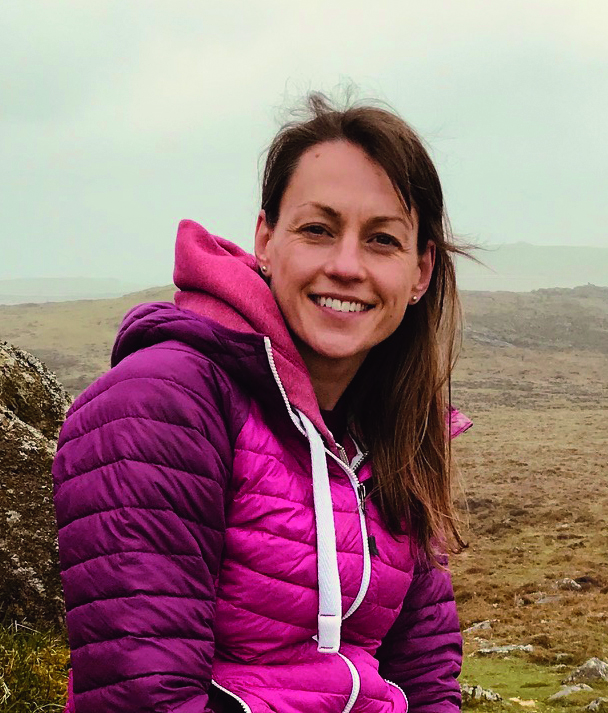The field of biology (and all the sub-fields of biology, such as zoology, botany, entomology and ornithology) is full of terms that may unfamiliar to those not from a scientific background.
In this glossary, we hope to explain the meaning of over 60 different words and phrases you may come across.
The terms are arranged in alphabetical order, click on the letter you want below to jump to that section of the article.
A – B – C – D – E – F – G – H – I – J – K – L – M – N – O – P – Q – R – S – T – U – V – W – X – Y – Z.
A
Allee effect
Environmental pressures, such as habitat loss, disease and hunting, are not the only threats to rare species. Once they drop below a critical population size, other processes kick in.
Rarer animals can struggle to locate mates or defend themselves through strength in numbers. For example, as African wild dogs have declined they have found it increasingly hard to form packs large enough to hunt their prey effectively. Such ‘Allee effects’ can push a species into a spiral of decline towards extinction.
Amphisbaenian
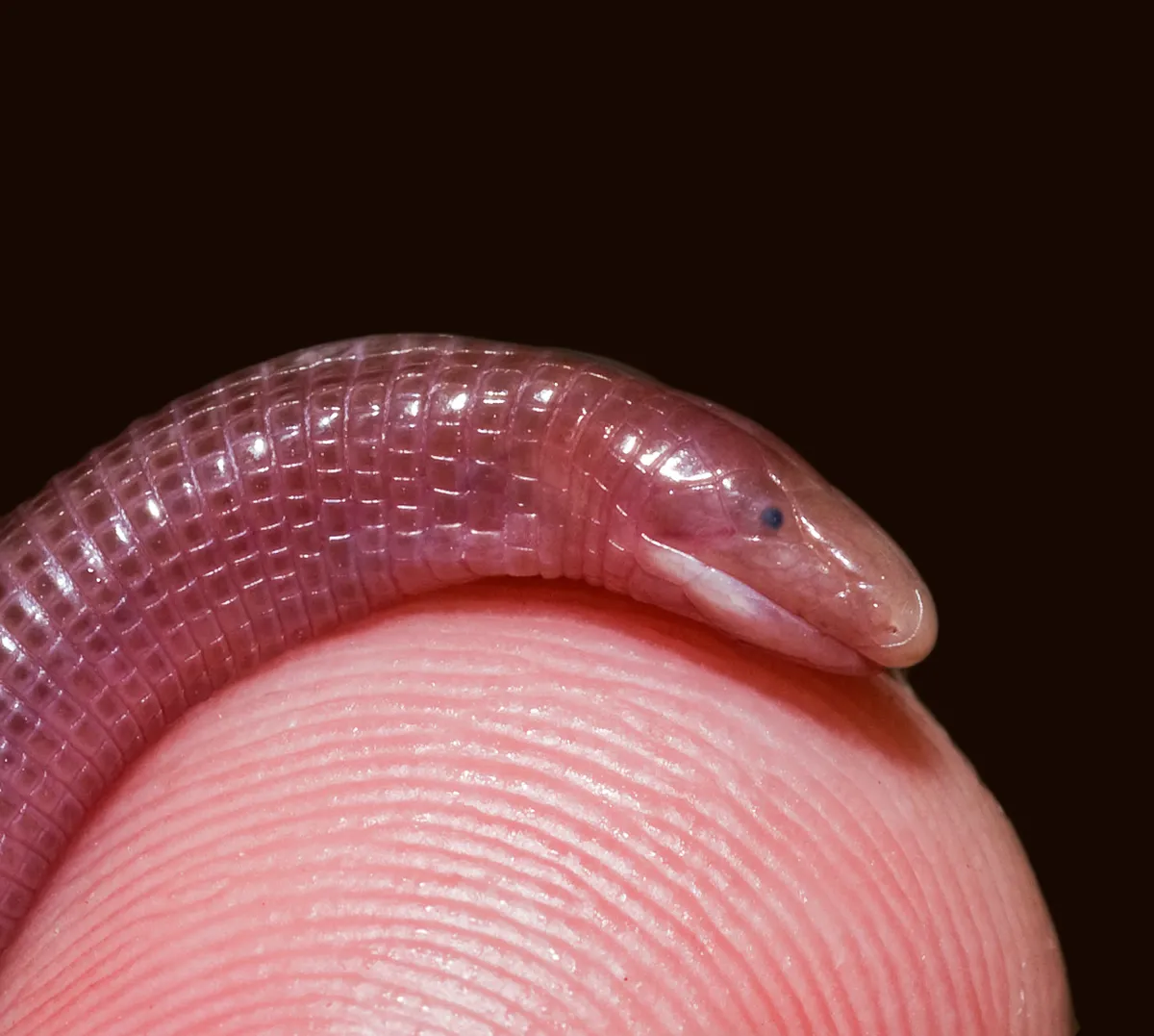
Also known as worm lizards, amphisbaenians are a group of blind, legless, burrowing creatures, which are neither worms nor lizards. Although they are uncannily similar to earthworms in terms of size and their ringed, cylindrical bodies, and to slow- worms, these sharp-toothed subterranean predators belong to a distinct group of reptiles found mainly in Africa and the Americas. Their relationship to other reptiles is mysterious – there’s even an enduring theory that they are more closely related to the ancestor of mammals.
The Anthropocene
As geological time-scales go, we are most familiar with the periods (Jurassic, Cambrian etc), which are subdivided into epochs. Many believe we are entering a new epoch – the Anthropocene, which recognises the influence of humans on Earth’s biological, atmospheric and geological systems.
There’s much debate over exactly when the Anthropocene started. One possibility is 1945, the date of the first nuclear tests, which will leave a distinctive radioactive signature in the rock strata of the future.
Auto-mimicry

Mimicry usually involves one organism copying features of another – a harmless hoverfly, say, adopting the warning colours of a wasp. But some creatures mimic themselves, or rather, they mimic one part of their body with another.
The eyespots at the tail-end of a butterflyfish (pictured), for example, draw predators’ attention away from the vulnerable head. Some species of pygmy owl have false eyes on the back of their head, giving assailants approaching from the rear the impression that they’ve already been spotted.
Autotroph
Most organisms get their energy and nutrients by eating other organisms. Something, though, has to be at the bottom of any food-chain. There, you’ll find autotrophs – life forms sustained by non-biological sources.
Green plants, for example, are built from little more than carbon dioxide and water and powered by sunlight. On hydrothermal vents, where the sun doesn’t shine, microbes are fuelled by chemical energy. Some fungi even harness the power of radiation and can thrive inside nuclear reactors.
B
Batesian mimicry
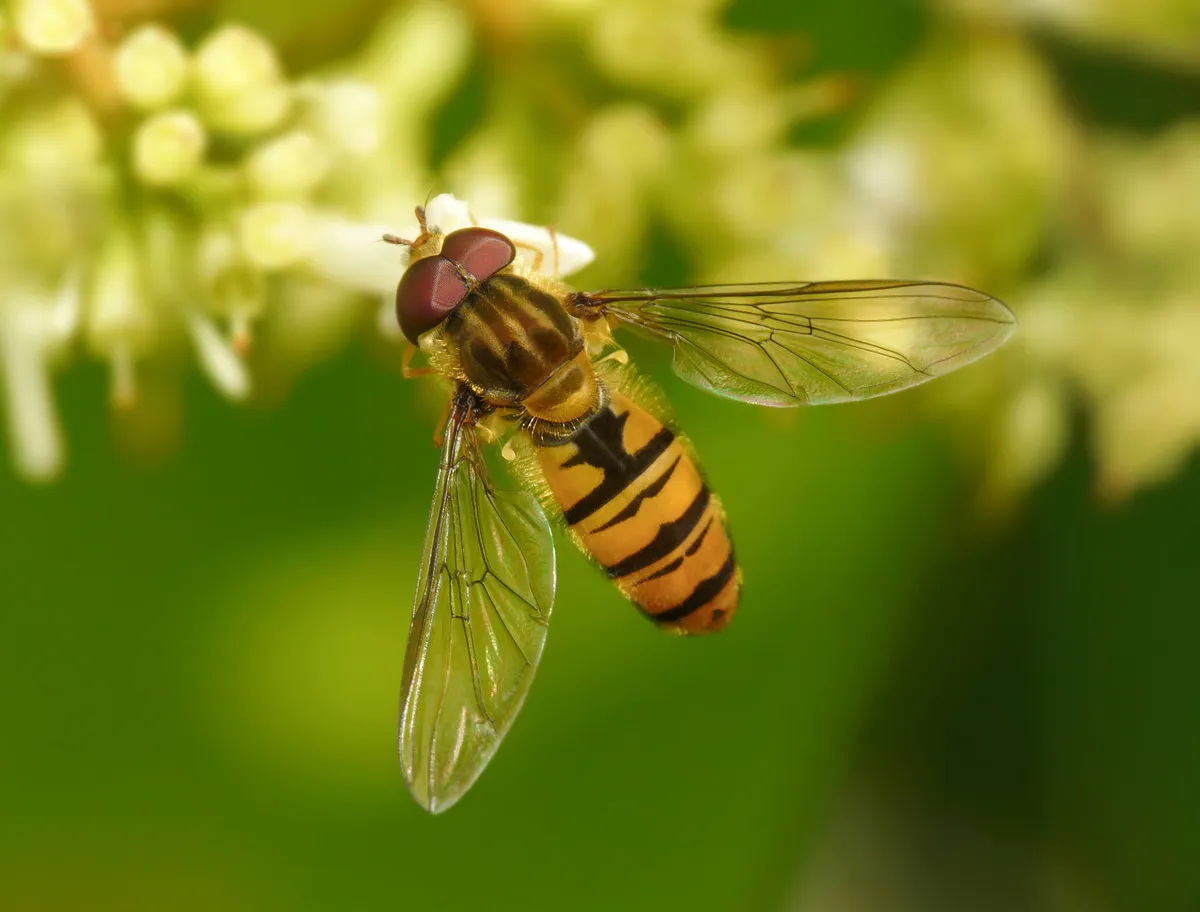
Predators soon learn that they're likely to be stung, bitten or poisoned by yellow-and-black-striped prey, and will avoid species with similar markings in future.
Wasps, bees, cinnabar caterpillars and other distasteful species gain mutual protection by relying on similar warning patterns on their bodies. Such Müllerian mimicry can be contrasted with Batesian mimicry, in which harmless species such as hoverflies (pictured) copy the markings of dangerous ones to gain protection by association, without going to the bother of producing costly defences.
Behavioural ecology
In the 1960s, biologists realised that, while they were pretty good at describing the mechanics of the behaviour of animals removed from their environment (such as instinct, learning and dominance hierarchies), they knew little of how that behaviour serves individuals' interests in the wild.
Behavioural ecology was the response. It draws on ideas from genetics, economics and ecology to study the strategies that animals and plants use to obtain food, friendship, sex and, ultimately, overall evolutionary success.
Bioacoustics
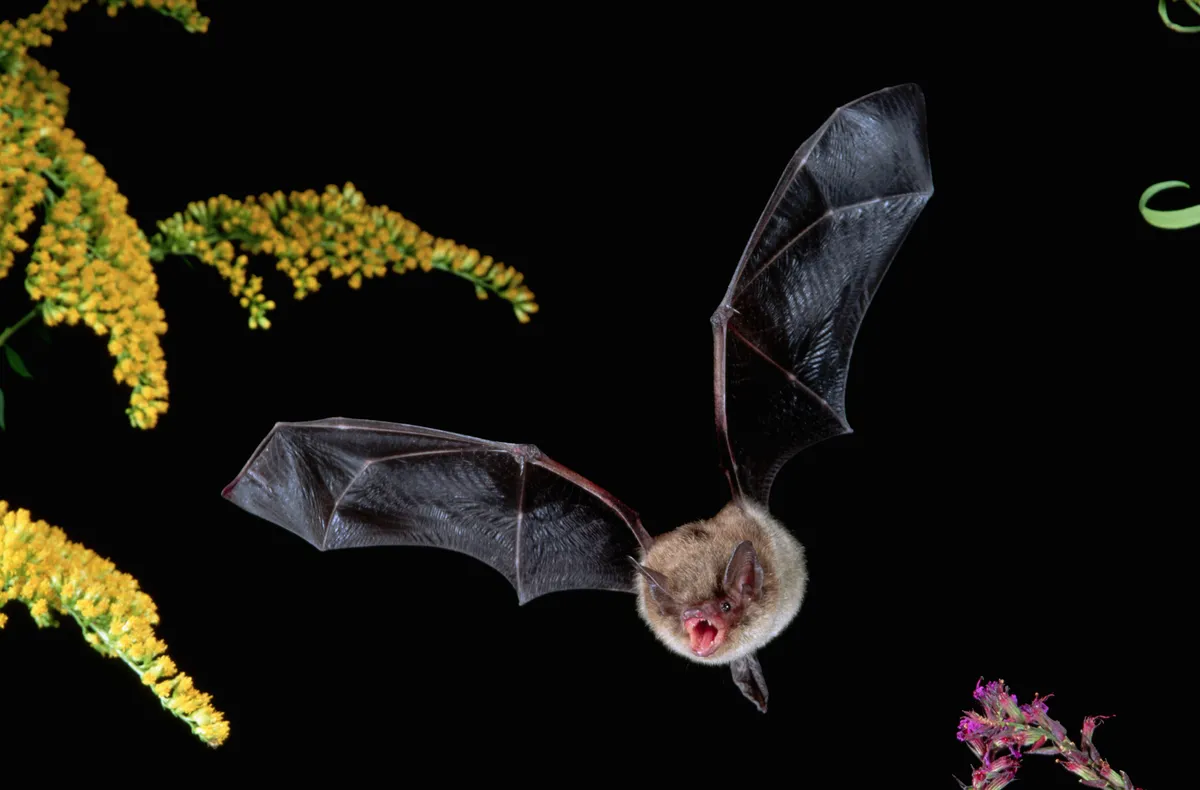
Bioacoustics is the study of sound in relation to animals. Bioacoustic monitoring has been transformed by the latest generation of super- sensitive digital audio recorders.
Researchers at the British Trust for Ornithology (BTO), which is pioneering the tech in the UK, say that it’s like having “digital ears”. The devices are simply left out in the field to record and store ambient sounds, such as the vocalisations of birds, bats or crickets. The great advantage is that you can record 24/7 (and in awkward or remote locations), then later analyse the data by computer.
Biodiversity
Though ‘biodiversity’ is now often used to describe what we once called ‘wildlife’, the terms are not entirely interchangeable.
Biodiversity describes the variety of life at all levels of biological organisation – so it could refer to genetic variations with a species, the sheer range of species that exist, or the different types of ecosystem. Efforts to measure and quantify this variety are behind concepts such as biodiversity hotspots and ecosystem services (the ways in which nature provides for humans).
Biosignature
Biosignatures have opened up an exciting, new(ish) field in the search for living things. If this all sounds a bit high- tech, that’s because it often is. A biosignature is any sign of life, from either present times or the past.
It could be part of the actual animal, plant or other life form (or something it has made) or it might be a faint chemical trace that the organism has left behind in the environment. Humanity’s endeavour to detect extra- terrestrial life is, in essence, a quest to boldly go in search of biosignatures.
Book lung
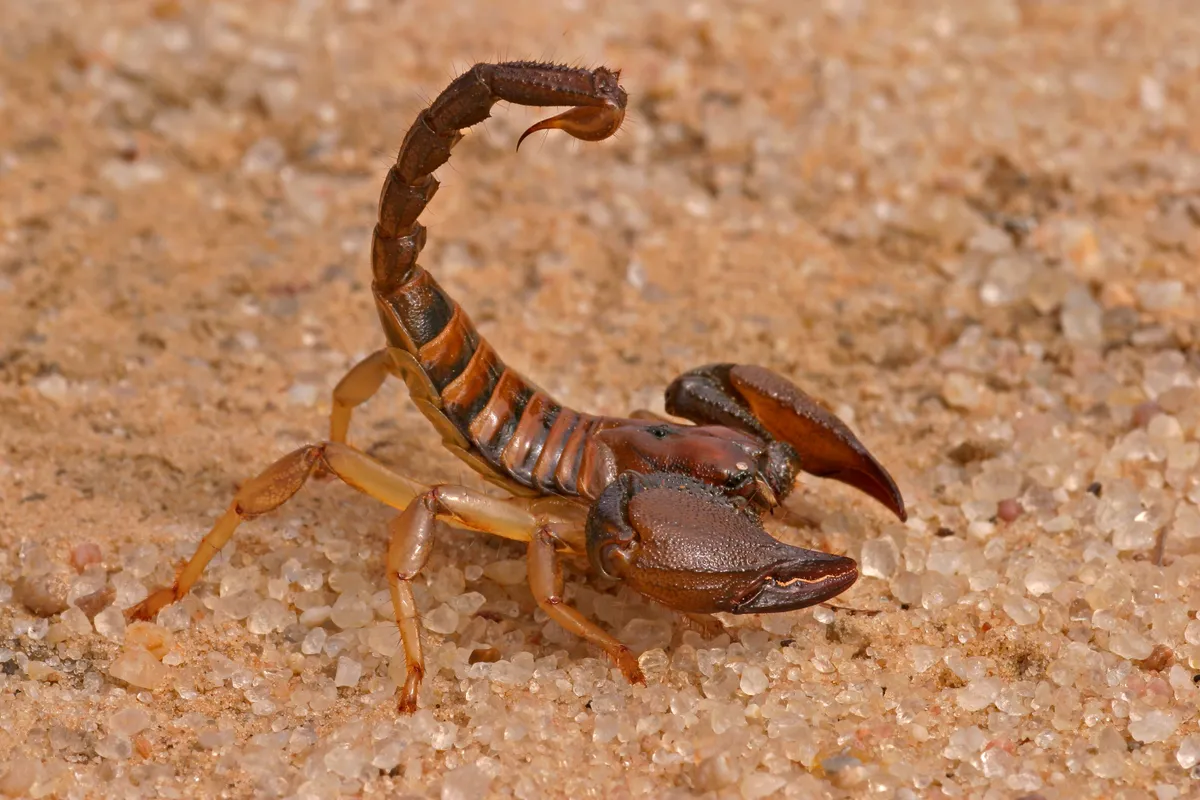
Animals have all manner of structures for extracting oxygen from their surroundings and excreting carbon dioxide. We may be most familiar with lungs and gills, but spiders and scorpions have book lungs.
These are enclosed in pouches under the body, and are so-named for their resemblance to the pages of a loosely bound book, between which air can circulate. It is thought that they evolved from the gills found on the underside of an aquatic ancestor that was similar to horseshoe crabs.
Brachiation
Yellow-cheeked gibbons brachiated to stunning effect in The Sun episode of BBC One’s A Perfect Planet. Put simply, brachiation means arm-over-arm swinging, from the Latin for arm, brachium.
Gibbons excel at it, with their exceptionally long arms, powerful shoulders and hook-shaped hands, in which the thumb is much smaller than you might expect for their size. Much like a pendulum, a gibbon maintains its momentum as it sweeps forwards, which makes brachiation as efficient as it is dramatic to watch
C
Capture-mark-recapture
To gauge the size of a population, biologists often capture individual animals, mark them, release them, then catch some more.
Because they know the number of individuals that they've marked, this enables them to estimate the total population – the proportion of mark animals they recapture matches the proportion of the population that they marked initially.
For species that can be recognised individually, camera-traps avoid the need for physical capture – the total is estimated from the proportion of animals that are spotted twice.
Cleisogamy and chasmogamy
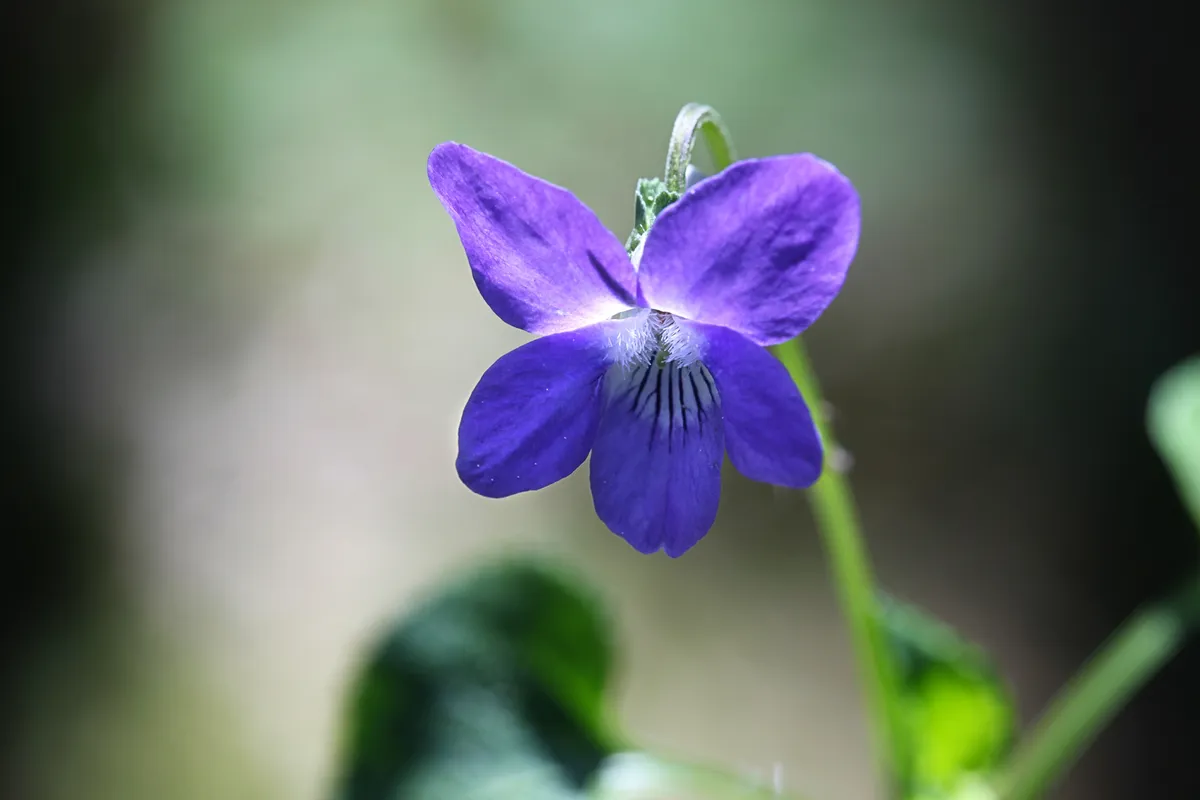
Cleisogamy is a self-pollination system in which the flowers remain closed, producing seeds with no help from insects. The opposite, in which the blooms open for pollination, is known as chasmogamy. Some plants, such as dog violet (above), use both strategies – cleistogamy restricts genetic diversity, but can offset poor seed production elsewhere on the plant.
Co-evolution
When evolutionary changes in one species leads to changes in another, and vice versa, their lives can become intimately entwined. Such co-evolution can be based on conflict – e.g. arms races between predator and prey – or co-operation.
After seeing a Madagascan orchid with a foot-long nectar tub, Darwin predicted the existence of an insect with a foot-long proboscis. Darwin's hawkmoth, with its foot-long tongue, eventually turned up. As a result of co-evolution, the orchid has a dedicated pollinator, while the moth has an exclusive source of nectar.
Commensalism
A relationship between two animals where one benefits from the other in some way, either by obtaining food or other benefit, without harming the other. An example of this is cattle egrets eating insects that are disturbed by grazing livestock.
Competitive exclusion
Two species cannot share a single ecological niche. Where their ranges overlap, one will outcompete the other. The less competitive of the two may be completely excluded from the range of the other.
But it might persist if it can shift to a slightly different niche, by learning to forage for alternative food, for instance. In this way, competitive exclusion drives diversification among groups of similar species – such as Darwin's finches in the Galápagos Islands – as each evolves to occupy its own distinct niche.
See also ‘Resource partitioning’ under R.
Convergent evolution
Convergent evolution happens when distantly related species develop similar solutions to the same problem. Porcupines (rodents) and hedgehogs (insectivores) evolved their spines independently.
In another example, not only have whales and bats evolved similar sonar systems, but some of the genetic changes that underpin them are identical.
In divergent evolution, characteristics two species share – such as the wings of gulls and of penguins – are tailored for different functions.
Cross-fostering
Offspring inherit more than just genes. Cross-fostering is a technique used to distinguish between the effects of nature and nurture. Eggs or newborns are removed from their biological parents and placed within a foster family.
If fostered chicks grow up to sing like their biological parents, for example, then their song is likely to be determined genetically; if they sing like their adoptive parents, it is probably learned. Often, though, the reality proves to be a subtle combination of the two.
Crown shyness
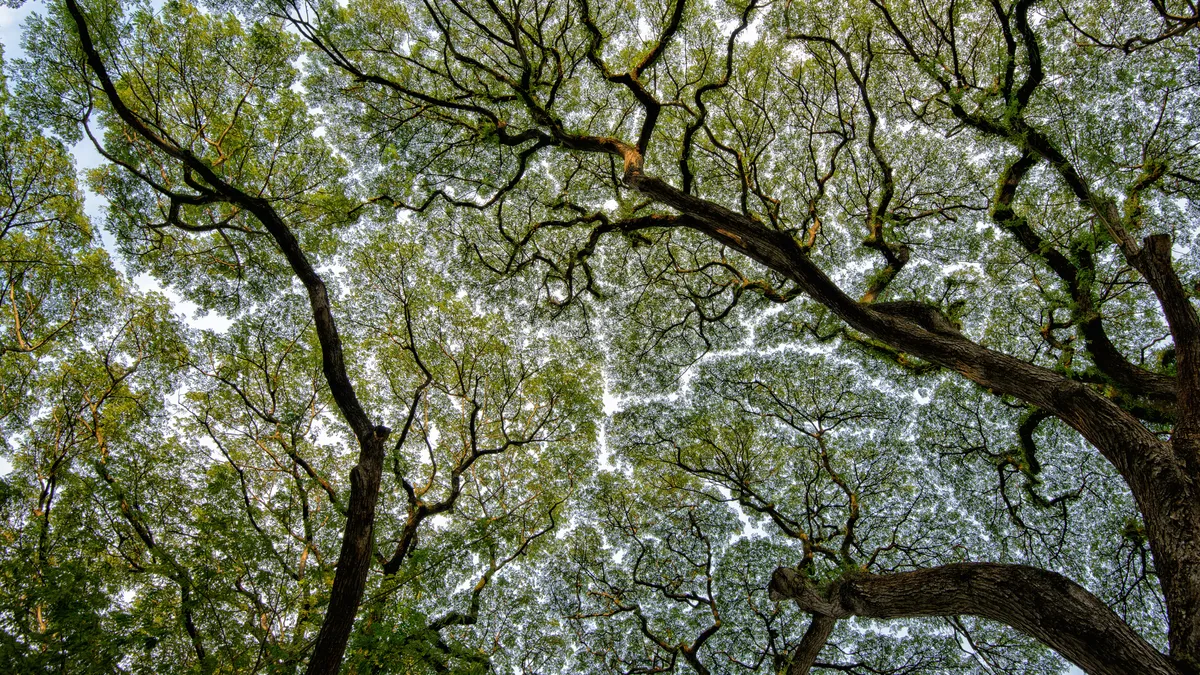
Temperate deciduous forests tend to compose a mixture of species of varying ages, with mature trees forming a canopy with layers of overlapping branches that all receive a share of light as the sun moves across the sky.
But in some other forests, particularly those with lodgepole pines, eucalyptus, mangroves and certain tropical dipterocarp trees, ‘crown shyness’ prevents neighbouring branches from overlapping and shading one another. From below, the treetops appear to lock together like the pieces of a jigsaw puzzle, separated by channels of blue sky.
Botanists are still debating the mechanism behind the mutual shade-avoidance. Some think that the physical abrasion between branches colliding on a windy day inhibits growth, thus maintaining personal space between trees. Others claim that buds at the end of twigs sense the far-red (one down from infra-red) light reflected from neighbouring foliage, which prevents growth towards each other.
This explanation originally appeared as a Q&A in BBC Wildlife Magazine, answered by Phil Gates.
D
Density dependence
The size and density of a species’ population can determine whether it grows or declines in the future.
Such density dependent effects play out elegantly in the dramatic population cycles of snowshoe hares and lynx in North America. When hares are plentiful, lynx eat well and increase in numbers. But more predators mean fewer hares. And fewer hares mean less food for lynx, so they decline in turn. This allows the hares to bounce back, only for the process to start all over again.
Dermatotrophy
They say mothers will do anything for their children, and one little- known group of sightless, worm- like amphibians takes this to extremes. In some species of caecilian (pronounced ‘si- silly-un’), females allow their offspring to tuck in – literally. A nursing mother develops layers of thick, nutritious skin, which her grateful babies peel off and eat using specialised teeth. Known as dermatotrophy, this peculiar practice is not known in any other animals. Caecilians spend most of their life burrowing through earth and leaf litter, so are seldom seen.
Dewlap

A strange word for an equally strange accoutrement, ‘dewlap’ refers to a wobbly flap of skin under the chin. It’s normally associated with large herbivores, such as the moose, eland (an African antelope, pictured) and kouprey (a rare species of Asian wild cattle).
Some lizards, including iguanas and agamas, also have foldable dewlaps. As a rule, these peculiar throat flags are used by adult males for display – to intimidate rivals and impress females – but there’s also a theory they may have evolved to regulate temperature.
Displacement activity
Just as someone unable to decide between the chocolate brownie and lemon drizzle cake is prone to scratch their head or tap their lips with their fingers, a bird that’s in two minds about whether to fight or flee from a rival might randomly peck at the ground, preen itself or wipe its bill on a branch.
These are displacement activities – seemingly irrelevant behaviours performed by animals caught between two opposing urges. Over time, the actions may become incorporated into territorial and courtship displays.
E
Ecological succession
After a disturbance, such as a wildfire, a roadcutting or volcanic eruption, plants and animals recolonise in a fairly predictable sequence as each arrival modifies the habitat, making it suitable for others.
A fresh lava slow, for example, may first be colonised by encrusting plants, which create a topsoil that can support herbs and grasses, then shrubs and woodland. The result is a table ‘climax community’ such as oak woodland – stable, that is, until the next disturbance.
Ecological trap
As humans alter the planet, the cues used for millennia by animals to identify suitable habitats can lead them into an ecological trap. Many mayflies, for example, locate fresh water by the way it reflects light. But tarmac produces similar reflections, causing the insects to lay their eggs on roads.
Meanwhile, hilly moorland is attractive to both golden eagles and windfarm developers. Whenever a bird is killed by a turbine, its territory is quickly filled by another that risks a similar fate.
Ecosystem services
There are many reasons to conserve species, habitats and ecosystems. Increasingly, they are being valued in terms of their contribution to sustaining an environment fit for humans.
The ecosystem services provided by a forest, for example, might include flood prevention, climate regulation and provision of biological resources. Likewise, vultures reduce disease by removing carcasses. Such services are economically significant, though putting a price on them has proved tricky.
Ecotone

Though it might sound like a photography filter or something to do with paint, ‘ecotone’ is how scientists describe a transitional area between two ecosystems. This could be the treeline on a mountain, a patch of scrub between more-open grassland and forest, or a marshy area along a riverbank.
Ecotones protect the ecosystems on each side, while providing distinctive conditions that many animals and plants favour, something known as the ‘edge effect’. Often they support a wider species mix than more- uniform habitat.
Environmental DNA (eDNA)
DNA, or deoxyribonucleic acid, is the molecule found in the nuclei of living cells that carries the genetic instructions for making the entire organism – the genome. Technology for interpreting and reading this code (known as DNA fingerprinting) is now so advanced that species can be identified from miniscule quantities of DNA. No longer is it necessary to have intact tissue samples or even whole cells to work with.
So-called environmental DNA (eDNA) can be extracted from water, soil, or other media, then amplified and decoded to provide evidence for the presence of a particular species without the organism ever being seen.
In the UK, the technique is particularly useful for confirming the presence of great crested newts (which is protected by law), in bodies of water, saving ecological consultants many long nights of surveying work.
This explanation originally appeared as a Q&A in BBC Wildlife Magazine, answered by Amy-Jane-Beer.
Epigenetics
Almost all the cells in a body are genetically identical. Yet that one genetic recipe produces blood, skin, nerve and many other cell types. That’s because genes can be turned on, off, up or down, while leaving the genetic sequence intact.
Similar epigenetic effects affect genetically identical individuals. Female mice produce startlingly different, genetically identical offspring through exposure to a chemical that twiddles the dials of a gene in the embryos that influences size and colour. Such differences can endure across many generations, making epigenetics a powerful evolutionary force.
Evolutionarily stable strategy
The concept of evolutionarily stable strategies emerged from the mathematical discipline known as game theory. A strategy is evolutionarily stable if it cannot be bettered – as long as most of the population adopts it.
This helps explain, for example, the evolution of cooperation; how animals make decisions about when they should fight or flee; and why most species produce equal numbers of males and females, even though a minority of males in many species (such as walrus) father the majority of offspring.
Extended phenotype
The recipe for building an animal or plant is written in its genes. But genes influence more than an organism’s physical form and behaviour (phenotype). They also impact its environment (think beaver dams and termite mounds) and the behaviour of others (eg willow warbler manipulated by a cuckoo chick).
An extended phenotype includes any influence that changes the odds of those genes being passed on. Ultimately, the concept redefines an organism as something more than its physical body.
Extremophile
Some organisms are capable of surviving conditions that would make a bald terrestrial primate’s eyes pop and their blood boil – the searing temperatures of hydrothermal vents, the bone-crushing pressures of the Marianas Trench and extremes of salinity, alkalinity, toxicity and acidity.
Most of these extremophiles are microscopic bacteria, algae and fungi – which are of great interest to scientists searching for extra-terrestrial life. One example is the microbes that turn the hot springs of Yellowstone National Park rainbow-coloured.
F
Flagship species
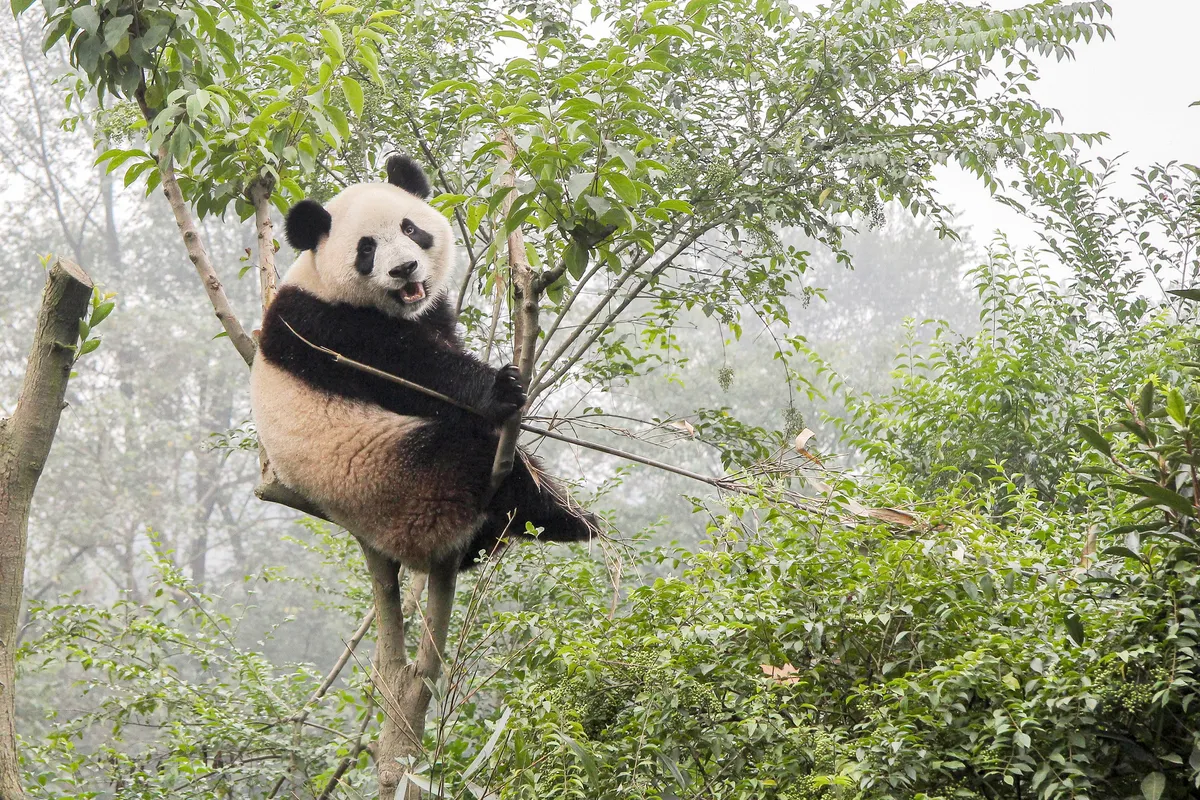
Conservationists often focus on large, charismatic species such as tigers, bald eagles, pandas, wolves and elephants in order to attract both funding and attention. This risks neglecting less charismatic, perhaps rare species, but many such flagship species double as umbrella species – their protection benefits other species in their habitat.
For example, Chinese forests protected for giant pandas (pictured) are also host to high concentrations of other threatened mammals, amphibians and birds.
Fraser Darling effect
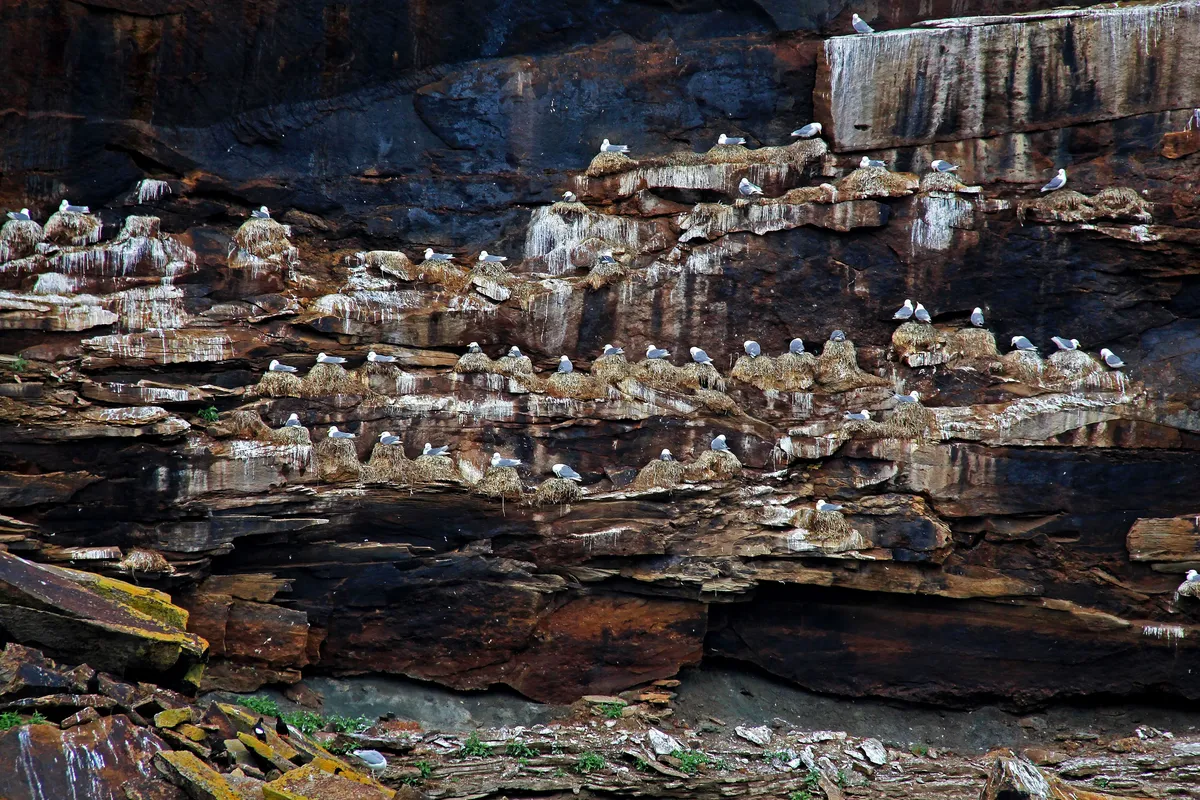
Many animals seek protection in flocks, herds, gaggles and pods. Such gatherings bring advantages beyond swamping predators through weight of numbers. Seabirds nesting in dense colonies raise their young faster than those going it alone, and a shorter breeding cycle exposes them to fewer predators.
The British ecologist Frank Fraser Darling, who first documented the effect in herring gulls, believed that social stimulation from neighbours primes a bird’s physiology for reproduction through something akin to group courtship.
G
Gaia hypothesis
Named after a Greek goddess of the Earth and proposed by British scientist James Lovelock in the 1970s, the Gaia hypothesis holds that the myriad ecological interactions between our planet’s animals, plants, microbes and chemistry serve to keep environmental conditions stable and fit for life – essentially, the Earth functions as a self-regulating “supra- organism”. The scientific evidence is scant and controversial but the idea remains influential.
Gastrulation
Described as the single most important event in anyone’s life, gastrulation is the moment when a very early-stage embryo – a simple ball of cells – folds in on itself to produce a gut, a front and back end, and the basic tissue types.
In vertebrates such as ourselves, but also acorn worms and echinoderms (including starfish), the initial dent in the ball’s surface eventually becomes the anus; in insects, molluscs and almost everything else, it becomes the mouth. This fundamental developmental difference points to an ancient branching of the animal family tree.
Genetic bottleneck
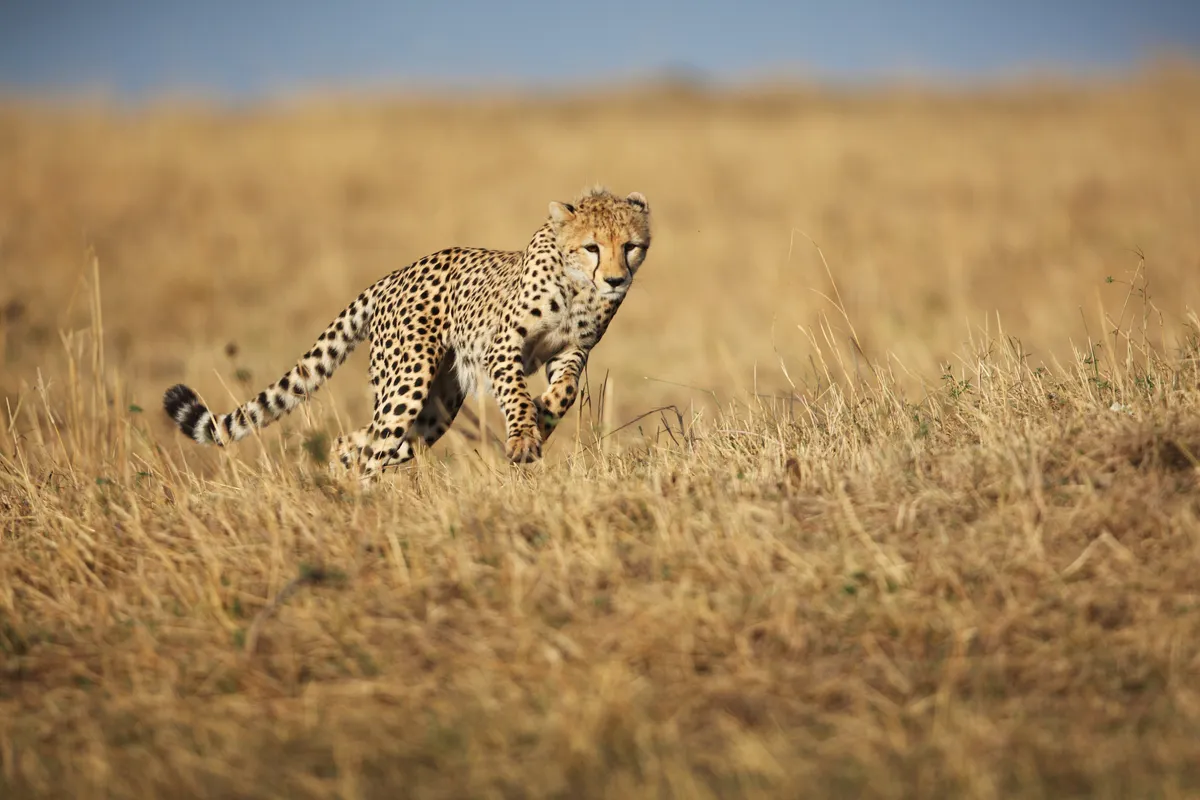
Just as the neck of a bottle restricts the rate at which wine can be poured, a genetic bottleneck checks the flow of genetic material between generations. The cause is often a sharp reduction in the size of a population, which reduces the gene pool to something more like a gene puddle.
Ten thousand years ago, the world’s cheetah population was reduced to just a handful of individuals, which echoes today in the species’ strikingly low genetic diversity. Theoretically, this means they are less able to adapt to environmental change.
Geophagy (geophagia)
Soil is an important part of many mammal diets, providing minerals such as calcium, sodium, iron and magnesium, and aiding digestion. In certain herbivores it helps to absorb toxins, acting as a buffer that can prevent stomach problems. Soil is also a source of bacteria that are vital to the healthy functioning of complex gut flora.
Geophagia is seen in many African species, including elephants, rhinos, antelopes and mongooses, while areas high in sodium (known as lick sites) are frequently visited by a host of creatures in need of this essential element.
This explanation originally appeared as a Q&A in BBC Wildlife Magazine, answered by Polly Pullar.
H
Hybridisation
The distinction between species is not always clear-cut, especially when they’re capable of interbreeding to produce hybrids, which can lead to two species merging.
But hybrids can also keep the parent species separate. That’s because hybrids are often sterile or lack the specialisations of either parent, putting them at a reproductive disadvantage. Sometimes, however, hybridisation can turn up genetic recipes that thrive – many species of plants have been created this way.
I
Indicator species
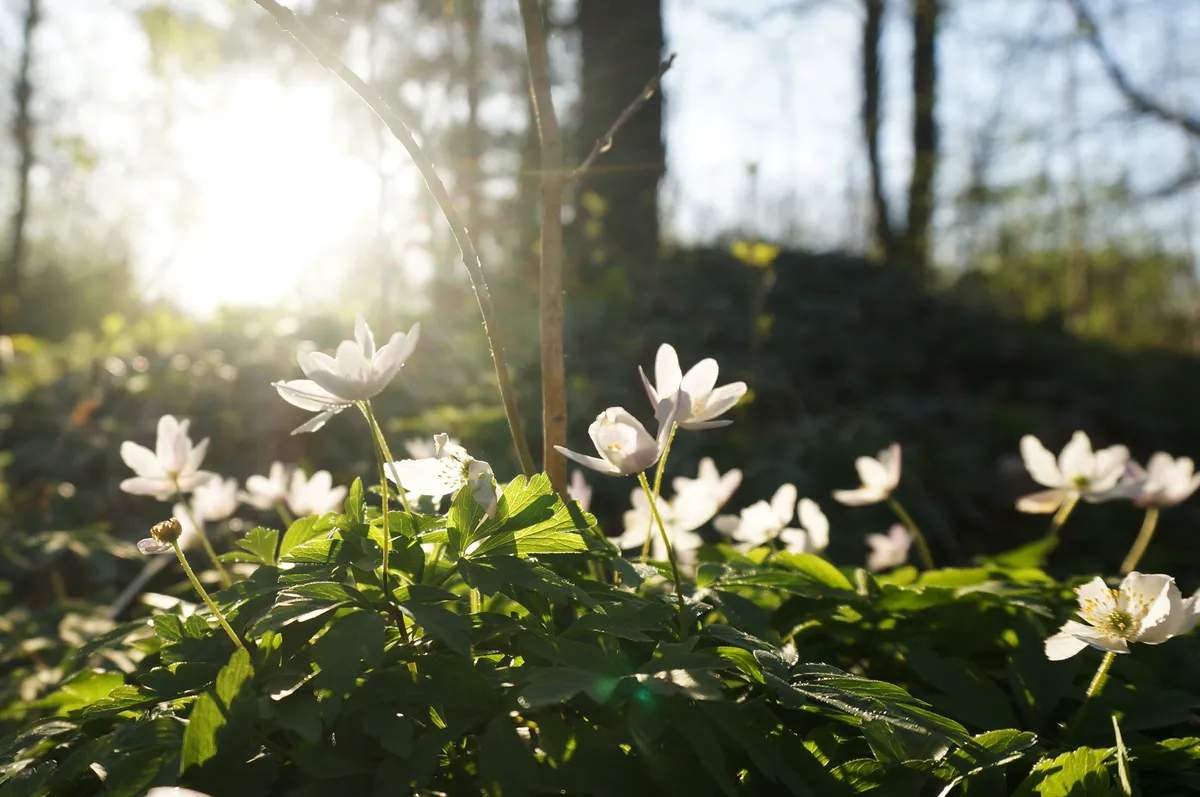
This is the name given to species characteristic of a particular habitat or certain environmental conditions. For example, the presence of wood anemone (pictured) or dog's mercury is a good indication of an ancient woodland – that is, one that has existed since before 1600.
The presence or absence of certain species may also be indicative of the health of a habitat – for example, bloodworms (midge larvae) are characteristics of polluted streams, while mayfly nymphs require clean water.
Instinct (hard-wiring)
In zoology, instinct (also known as hard-wiring) refers to behaviours that are not learned. A classic case is a gosling’s urge to imprint on the first thing it sets eyes on after hatching – usually its mother – and follow it everywhere. In practice, most behaviour is a blend of instinct and learning. Imprinting may be hard-wired, but a gosling must still learn what its “mother” looks like. Which is why it will famously follow a bearded zoologist everywhere if that’s the first creature it lays eyes on.
J
K
K-T Boundary
The K-T Boundary (also known as the K-Pg Boundary) is a stratum – a distinctive layer of rock – that runs around the world and marks the transition between the Cretaceous and Tertiary geological periods. It was laid down about 66 million years ago, coinciding with the end of the dinosaur age. The layer is rich in iridium, an element that is rare in the Earth’s crust, but common in meteorites, providing some of the strongest evidence for what caused the mass extinction.
Keystone species
Named after the crucial central stone at the apex of a masonry arch, a keystone species is one that plays a pivotal role in the functioning of an ecosystem. Its removal causes dramatic changes.
The term was first applied to the purple sea star, whose predatory behaviour boosts species diversity in Pacific coastal waters. Other examples include prairie dogs (which create specialised habitats), hummingbirds (which pollinate many different trees) and jaguars (which regulate a wide range of mammal populations).
L
Lek
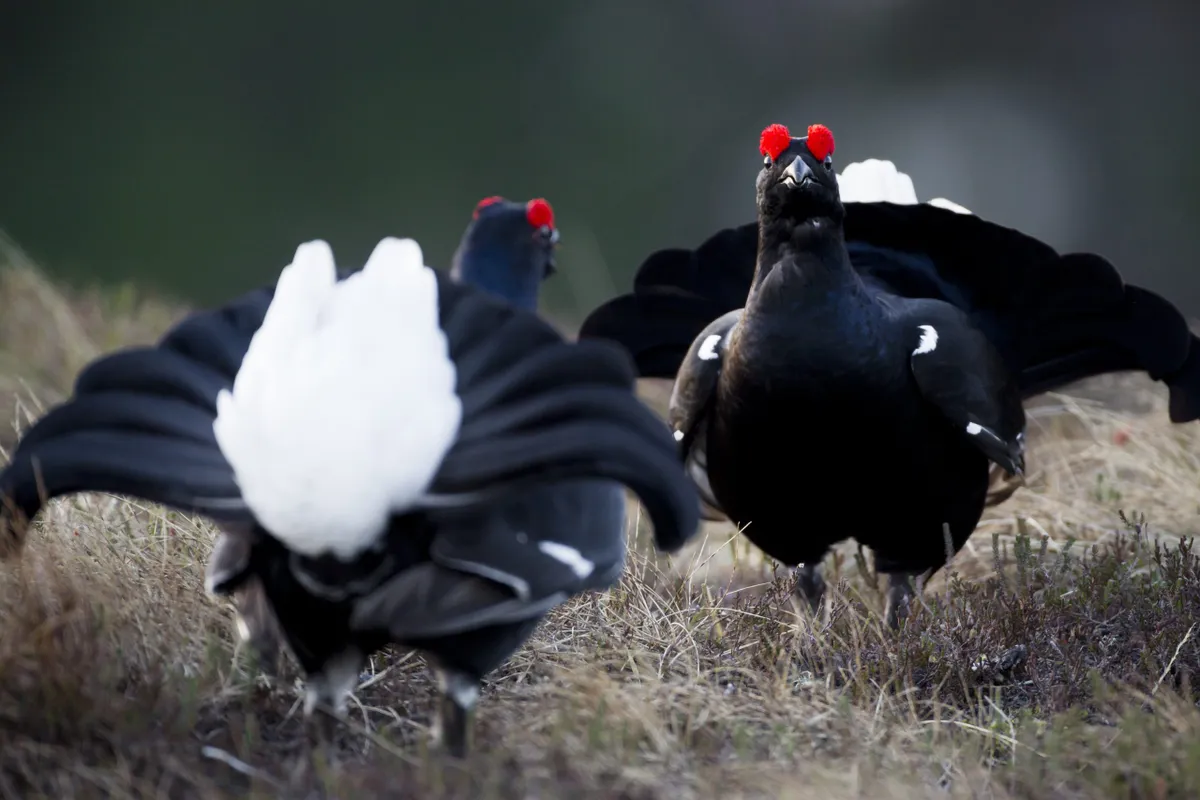
Male kob antelope, black grouse and those flies that swarm round your head when you stand still for too long in a field are lekking species. Males (it’s almost always the males, but see left) gather together to display their prowess to visiting females, who queue up for the best performers. Dowdier males miss out entirely. Which raises a conundrum: if only the sexiest males’ genes are passed on, why are there still unattractive ones? The ‘lek paradox’ remains to be solved.
Lumping
See 'Splitting and lumping' under S.
M
Marine snow
In the ocean, it never stops snowing. The ‘snow’ is a shower of dead microscopic organisms, faeces, mucous, fish scales and other organic detritus, falling constantly to the inky depths. On the way down, much is captured by filter-feeding animals, with the rest settling on the ocean floor as a thick, oozy layer of silt. It is ‘manna from heaven’ for deep-sea urchins, worms and other creatures. Marine snow, by cycling carbon through different layers of the ocean, is what enables most deep-sea communities to exist.
Mating systems
Species vary in how they organise their sex lives. In polygynous mating systems, the most desirable or powerful males monopolise multiple females via attraction or aggression.
Polyandrous species, in which those sex roles are reversed, are rare. Polygynandrous species opt for complicated ‘ménages à trois,’ (or quatre or cinq), making childcare tricky. Good old-fashioned monogamy and biparental care is common among birds, though unfaithful flings are routine.
Microbiome
A community of microorganisms living together in a defined habitat, whether the soil beneath a plant or the surface of human skin.
Mutualism
Mutualism is a kind of symbiotic relationship between two or more lifeforms where all the species involved benefit from their interactions. They could either depend on each other for survival, or manage without each other. An example of the latter is the relationship between ants and aphids, where ants farm aphids and feed from the sweet honeydew sap that aphids draw from a plant. In return, the aphids receive protection.
N
Nekton
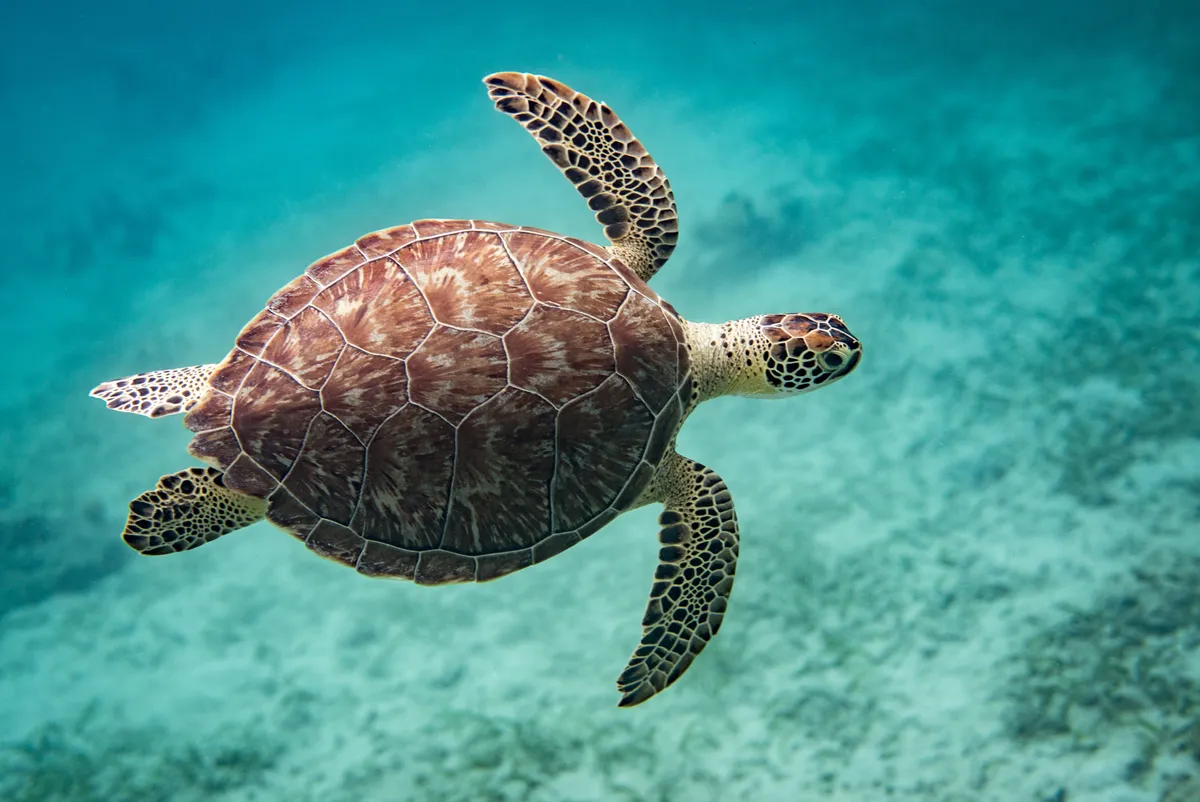
Organisms inhabiting a body of water can be divided into four broad groups. Benthos inhabit the bottom and are often attached to it (think coral or seagrass); pleuston float on the surface (pond skaters or Portuguese man o’ war); plankton – tiny and passive – go wherever the currents take them; and nekton comprise the fish, squid, turtles and other active swimmers. Many aquatic organisms start out as plankton and transition to nekton (or benthos, or pleuston) as they mature.
Neotony
Most juvenile animals aren’t simply miniature adults. Rarely is this more obvious than among amphibians – think of a tadpole and a frog. Sometimes, though, youthful characteristics are retained into adulthood.
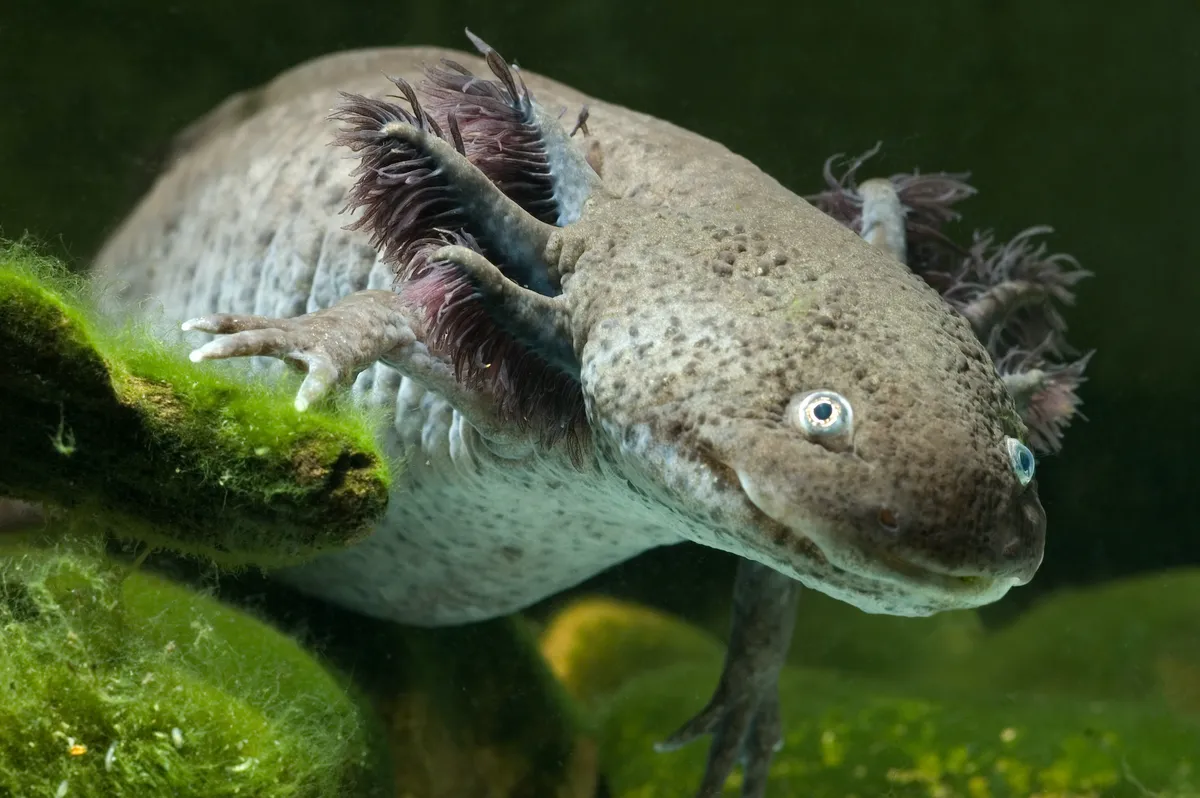
In the axolotl, an aquatic Mexican salamander, adults are essentially sexually mature tadpoles. Neoteny can also be seen in flightless female glow worms, which are much like their larvae. Humans’ large heads may be a neotenous development to make space for our big brains.
Notochord
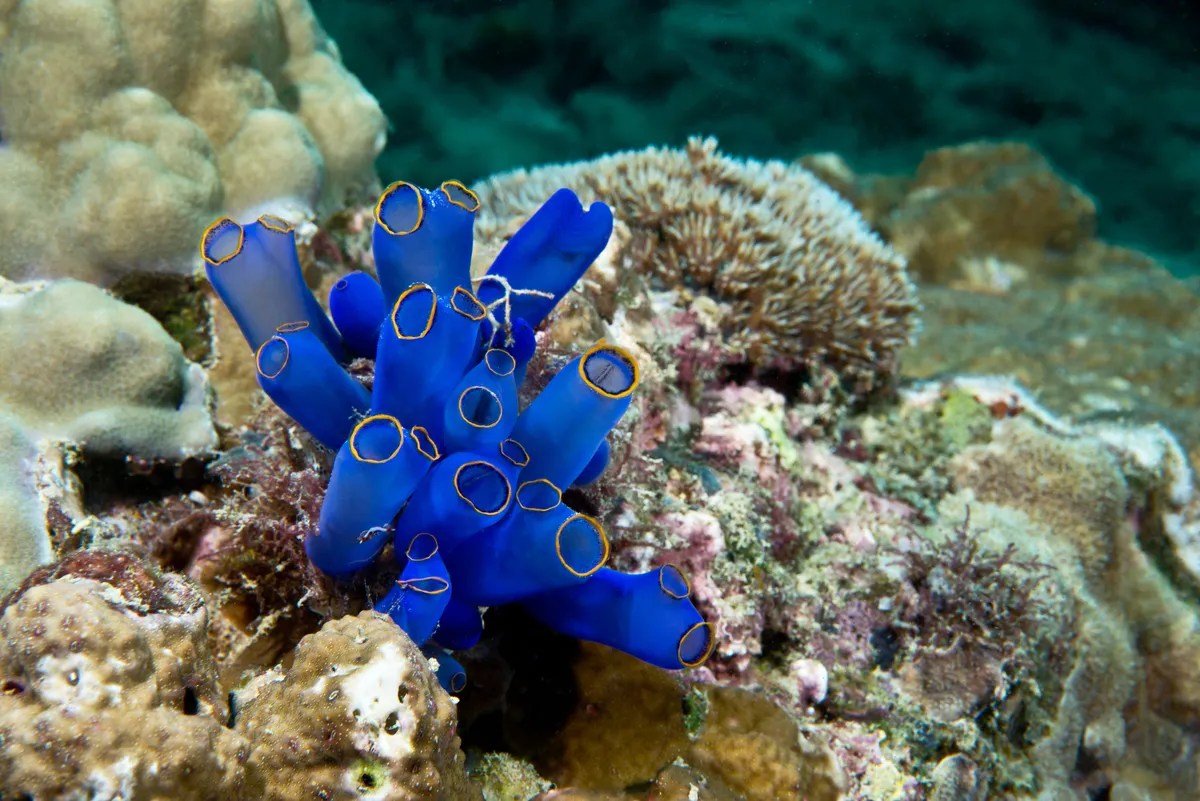
On the face of it, humans and sea squirts – tubular, rock- clinging filter feeders – have little in common. But there’s one fundamental feature that groups us together on the tree of life within the phylum Chordata (‘chordates’). A notochord is a semi-rigid rod that runs the length of the body, providing an attachment site for muscles.
In sea squirts, it is found in the free-swimming, tadpole-like larval stage. In vertebrates, it has been largely replaced by the spinal column, although it can still be seen during our embryonic development.
O
Old vs New World
Until Christopher Columbus ‘discovered’ the Americas, the known world, for those on this side of the Atlantic, comprised Europe, Asia and Africa. Thus, the terms Old and New World were coined.
Today, aside from describing the geographical origin of wines, they are useful biologically. New World monkeys, for example, embarked on a separate evolutionary journey from their Old World cousins before apes had even appeared, while Old and New World warblers and vultures describe different lineages of similar seeming birds.
P
Paleontologists
Scientists studying extinct species from different geological eras.
Parent-offspring conflict
Few human mothers and fathers will be surprised to hear that the interests of parents and offspring do not always coincide.
A parent’s optimal strategy might be to share resources equally between offspring. This can lead to tantrums, squabbles or, in extreme cases, death when one offspring wants more for itself. Blue-footed booby chicks attempt to throw their siblings from the nest, something that the parents try to prevent by making the walls steeper.
Pedicellariae
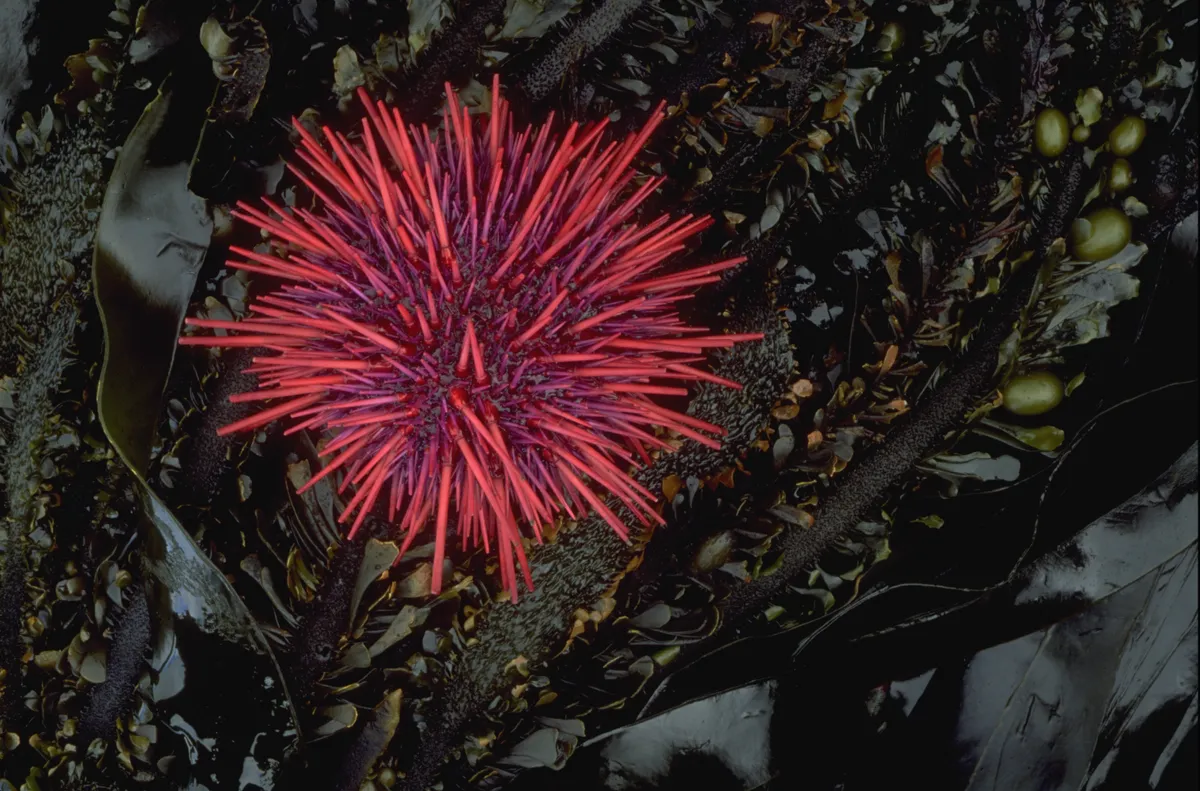
Personal grooming isn’t particularly easy when you don’t have the benefit of hands or a beak for scratching and preening. Lucky, then, that sea urchins, whose hard external surface provides prime real estate for algae and various other encrusting organisms, are blessed with thousands of microscopic, tweezer-like appendages, known as pedicellariae, that keep their skin spick and span. In some species, these tiny protuberances are put to other uses – to grasp passing prey, for example, or to deliver a venomous sting.
Perovskite

Hailed as a ‘miracle material’, perovskite could revolutionise solar power. For the chemically minded, it is the mineral calcium titanate, and the reason people are excited about it is that when added to traditional solar panels made from silicon, it dramatically improves the efficiency with which the sun’s energy can be harvested.
Perovskite features in the More Power from the Sun episode of 39 Ways to Save the Planet, a Radio 4 series on ideas to help slow climate change.
Phylogeny
Much like a family tree depicts kinships between individuals, a phylogenetic tree, or phylogeny, represents the branching evolutionary relationships between life forms past and present. The relatedness of any two modern species (the spindliest, outermost twigs) can be gleaned by tracing their parental branches back to where they meet at a shared ancestor.
Biologists now have a pretty good idea of the overall branching pattern, but some untangling is still required: can all animals be traced back to a jellyfish-like ancestor or a sponge-like one?
Poisonous
See 'Venomous and poisonous' under P.
Polymorphism
There is always some variation between individuals of the same species. But sometimes, a species contains two or more distinct types, or morphs (picture below). The differences may be clearly visible, cryptic (as in human blood types) or behavioural.
Often the multiple morphs are capable of coexisting because each excels in different circumstances. Tropical American passion vine butterflies, for example, mimic different poisonous models in different parts of their range.
Pseudo-extinction
Fossils provide a series of snapshots of evolution rather than a continuous record. This can make things tricky to interpret. If something disappears from the fossil record, for example, one might assume that it went extinct, when it really just evolved into something else.
Dinosaurs are a classic case of so-called pseudo-extinction. They apparently disappeared completely 65 million years ago, until painstaking analysis of fossil bones revealed that one lineage survived the meteor strike and gave rise to the birds.
Q
Quadrat and transect
Because it's rarely possible to count every individual in a population directly, ecologists usually make estimates by counting a subset of the population and scaling it up.
Plants of sedentary animals can be sampled with a quadratic, a square frame (usually 1m x 1m, find out how to make a measuring quadrat in our step-by-step guide) that is placed at random points around a habitat and the individuals within counted.
In contrast, transects are used to monitor population trends. This involves counting the individuals encounter while walking a set route through a habitat, which is repeated year after a year.
R
r and K selection
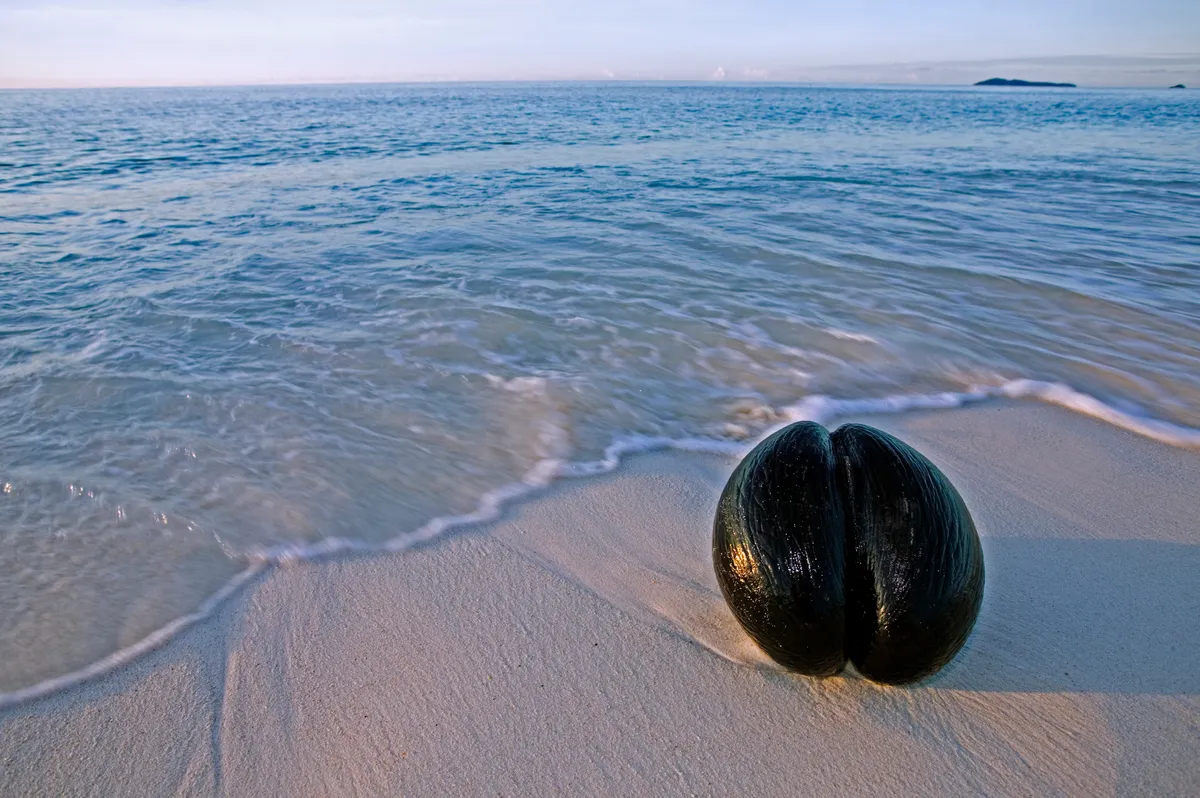
Some species produce quality offspring; others go for quantity; the rest sit somewhere in between. At one extreme, r-strategists (eg dandelions and salmon) scatter myriad minute progeny, each of which is unlikely to survive, on wind and tide.
At the other, K-strategists (whales and coco-de-mer palms) produce a few fat eggs, seeds or embryos and nurture them to maturity. Ks tend to grow bigger and live longer than rs and dominate them ecologically. But opportunistic, live-fast-die-young rs are adept at colonising fresh ground.
Recessive alleles
Most organisms inherit two copies of each of their genes – one from each parent. Sometimes these two ‘alleles’ work together, but often one overrides the other – known respectively as a dominant allele and a recessive allele. For example, human alleles for brown eyes override those for blue ones – so the allele for brown eyes is dominant, and the allele for blue eyes is recessive.
Because recessive alleles can ‘hide’ behind dominant ones, harmful recessives are rarely weeded out entirely by natural selection. This can be be a problem in small, inbred populations, which increases the chances of two recessives coming together in the same individual.
Red Queen hypothesis
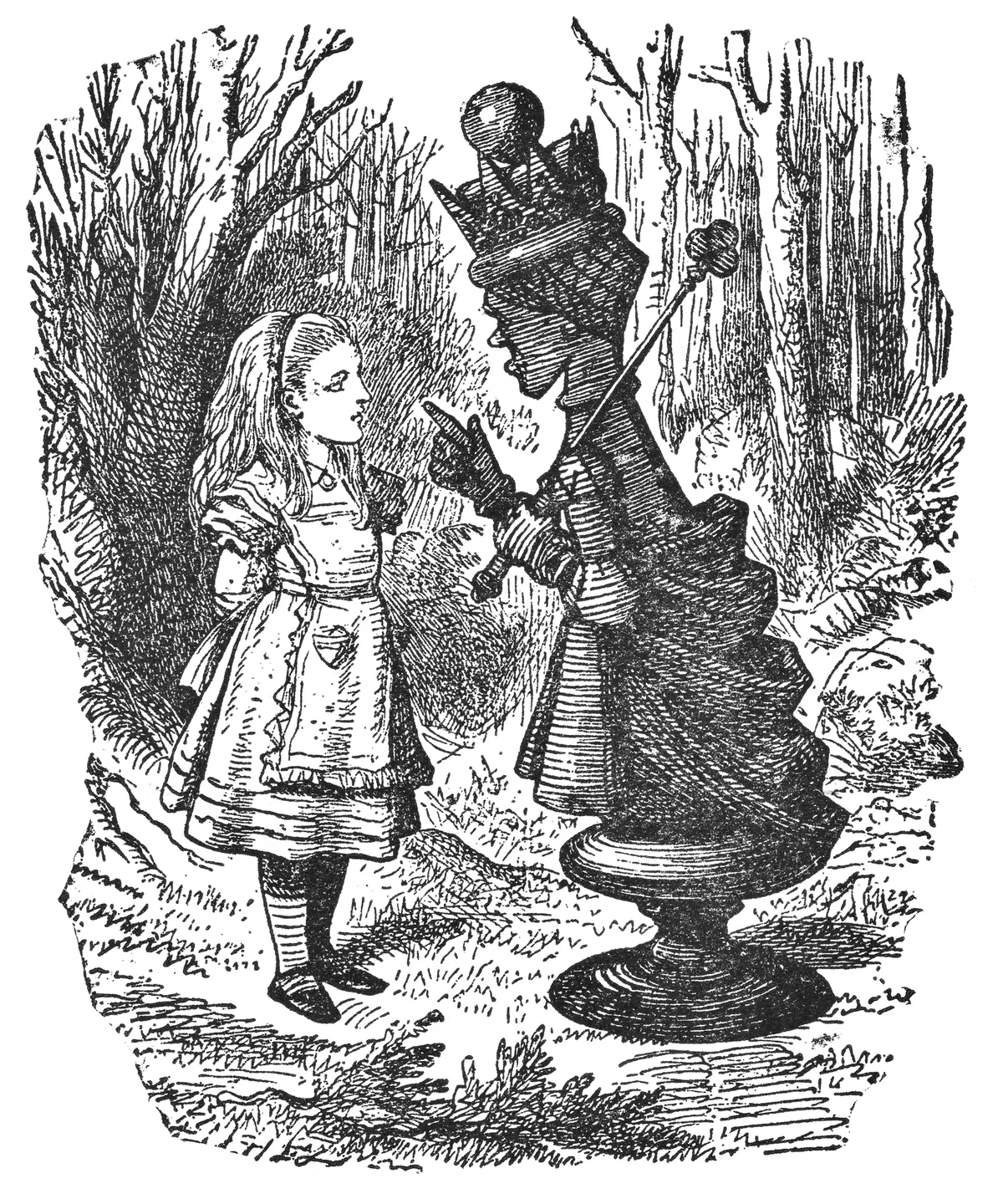
Most of us can relate to the Red Queen of Alice Through the Looking-Glass fame, who had to keep running to stay in the same place. Her predicament has been borrowed by biologists trying to explain why virtually all species reproduce sexually, even though it’s highly inefficient.
The idea is that organisms must keep evolving just to survive in a world where everyone else is evolving, too – an evolutionary arms race, where both predators and prey are evolving. By mixing up genes from different individuals, sex allows species to evolve faster. Stop running on the spot and extinction surely follows.
Resource partitioning
No two species in the same place can earn their living in exactly the same way. One will always outcompete the other. Groups of similar species avoid treading on each other’s toes by specialising to fill subtly different niches.
A single Caribbean forest, for example, may contain multiple species of arboreal, insectivorous Anolis lizards. But each specialises in different insect prey at different heights off the ground. Resource partitioning is part of the reason we have so many species.
Rete mirabile
Translated from Latin as ‘marvellous net’, a rete mirabile is an intricate mesh of blood vessels that are so closely entangled that heat or molecules can be exchanged between them.
In waterbirds, arteries carrying warm blood to the feet are interlaced with veins carrying cold blood back into the body. This clever physiology allows blood to be cooled on its way out, reducing heat loss to the surrounding cold water, and to be warmed up again on re-entry. Similar systems are found in the flippers and flukes of marine mammals.
S
Samara
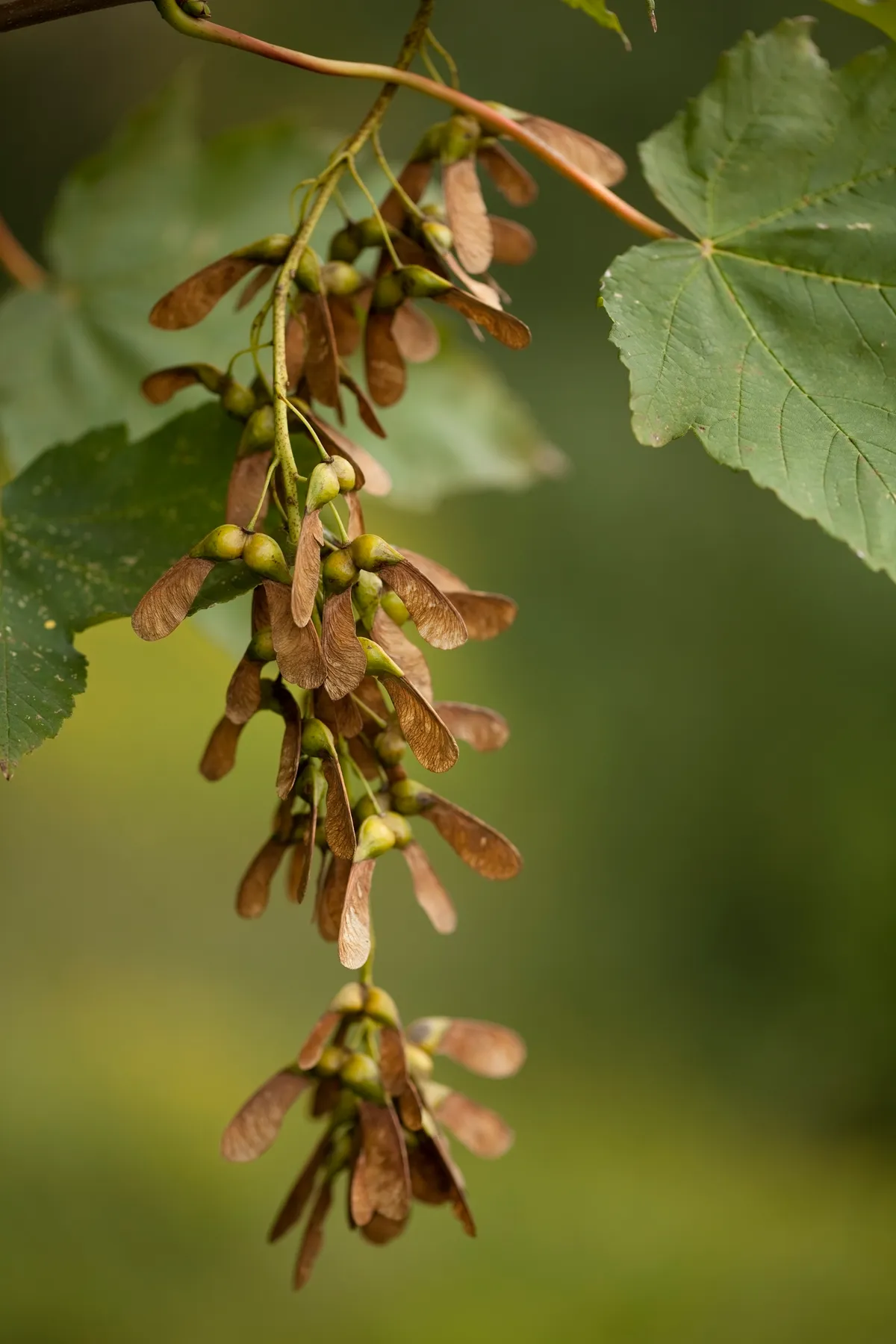
Trees enlist various forces of nature to scatter seeds, from hungry animals to the wind, gravity, water, even fire. Some using wind assistance seal each seed inside its own papery wing – actually a fruit, called a samara.
Often samaras are joined in pairs, such as the twirling ‘helicopters’ of sycamores and maples, or hang bunched in ‘keys’, as with ash and hornbeam. English and wych elms also produce samaras, though the ravages of Dutch elm disease mean children don’t get to play with them much today.
(The) Selfish herd
Herds, schools and flocks can look like classic example of mutual co-operation that benefits the group as a whole, and indeed they sometimes are. But they can often be explained as the result of individuals selfishly using each other for their own advantage.
If you stick close to others, for example, then it is less likely that you'll be the one eaten if a predator approaches. It's no accident that dominant individuals often occupy the safest, central positions within a group.
Shifting Baseline Syndrome
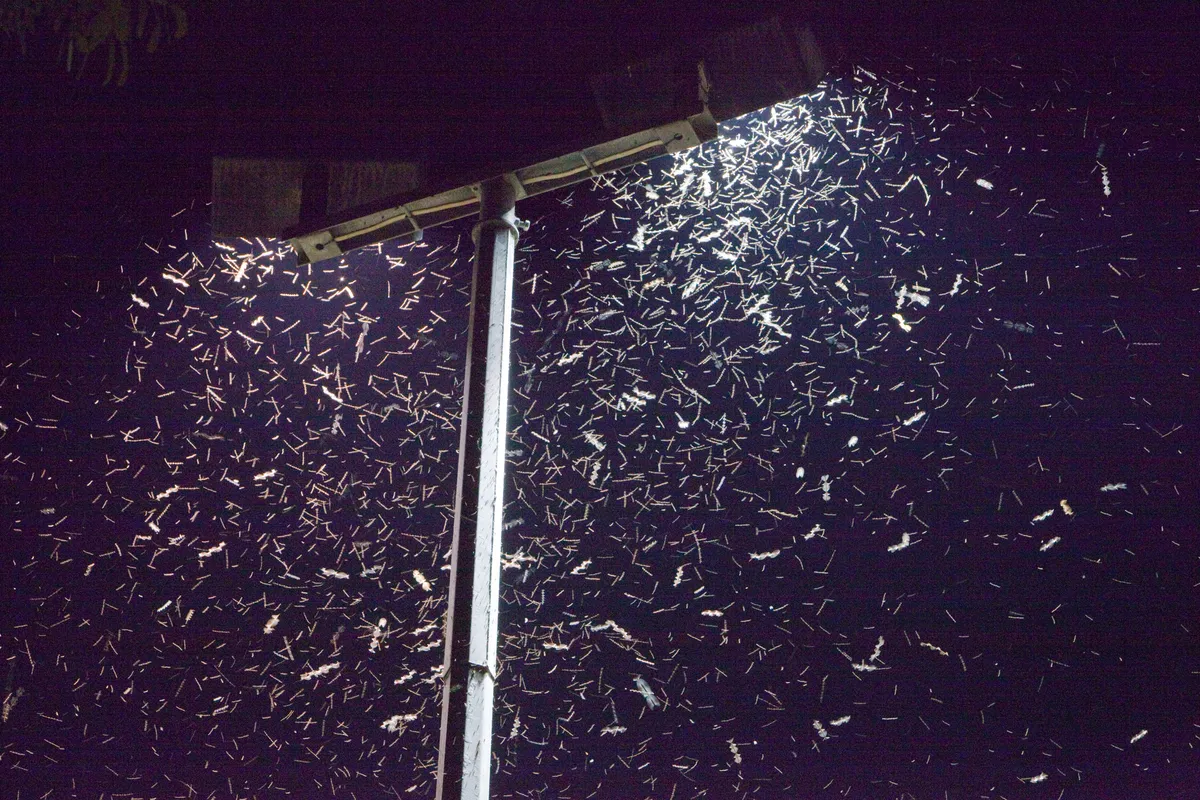
Conservationists developed the idea of shifting baseline syndrome to explain the insidious process by which biodiversity is lost without us even realising.
We have an unfortunate tendency to assume that the environment into which we are born is ‘normal’, and take the abundance of wildlife at this point as our baseline.
This baseline shifts with each generation, so we fail to grasp the scale of species declines over the long term. Within two generations, we have lost any notion of the abundance of nature that our grandparents once took for granted.
Solastalgia

Environmental destruction is spawning numerous neologisms as we try to come to terms with our eco grief and make sense of what is happening to wildlife. Some are described in Lucy Jones’s book Losing Eden (Allen Lane), including ‘solastalgia’, coined by the Australian environmental philosopher Glenn Albrecht, actually over a decade ago.
A combination of ‘solace’ and ‘nostalgia’, it expresses how upset and powerless we feel when a much-loved place that used to bring us solaceis destroyed.
Losing Eden is included in our round-up of books on mental health, mindfulness and connecting with nature.
Sources and sinks
Across a species’ range, some habitat patches are better than others. The best ones foster reproductive rates that boost overall numbers; the worst run at a loss. Surplus animals from source populations can top up the sinks, unless the sinks swallow up individuals faster than sources can churn them out, resulting in a net decline.
Grizzly bears attracted to the gastronomic delights available around human settlements, for example, tend to get shot or run over, only to be replaced by others that suffer the same fate.
Splitting and lumping
The confusion around whether animals are separate species or subspecies stems from disagreement among taxonomists about how many different animals need to be to justify splitting them into different types. Or, put another way, how similar they need to be to justify lumping them together.
Splitting has recently dominated because of the development of genetic techniques to detect hidden differences, resulting in both new species and subspecies being described.
Recent reclassification of species and subspecies:
- News (2021): Analysis of skulls reveals that river dolphins in South Asia are two separate species
- News (2020): Gentoo penguins should be split into four species, rather than four subspecies
- News (2019): Newly described salamander in museum is the world's largest amphibian
- News (2017): New identity for UK grass snake
- News (2016): Giraffes are not one species, but four
Symbiosis
Any relationship between species in intimate proximity is termed ‘symbiotic’. There are three main types:
In parasitism, one party benefits at the other's expense. For example, a tick sucking blood from an antelope.
In mutualism, both benefit. For example, in the relationship between antelopes and tick-eating oxpeckers, one species (the oxpecker) gets a meal while the other (the antelope) has its ticks removed.
In commensalism, one party benefits at no cost to the other, as would be the case if the oxpeckers did not eat ticks, but just hitched a ride on antelopes' backs.
T
Taxonomists
Taxonomists are professionals – in most cases in Discover Wildlife articles, scientists – who specialise in classifying and sorting information based on an established system. They work in a range of fields to identify and describe various organisms or concepts, then sort them based on similar patterns and characteristics.
Telomeres
Tiny details can have huge impacts. Telomeres are minute structures that protect the ends of chromosomes from damage, rather like the plastic tips of shoelaces. The longer the telomere, the greater the protection.
But telomeres shorten with age and in response to stress and illness. Pet African grey parrots housed alone, for example, develop shorter telomeres than those who get to socialise. And shorter telomeres mean more damage to the chromosomes – damage that can be passed onto offspring.
Transect
See 'Quadrat and transect' under Q.
Trophic cascade
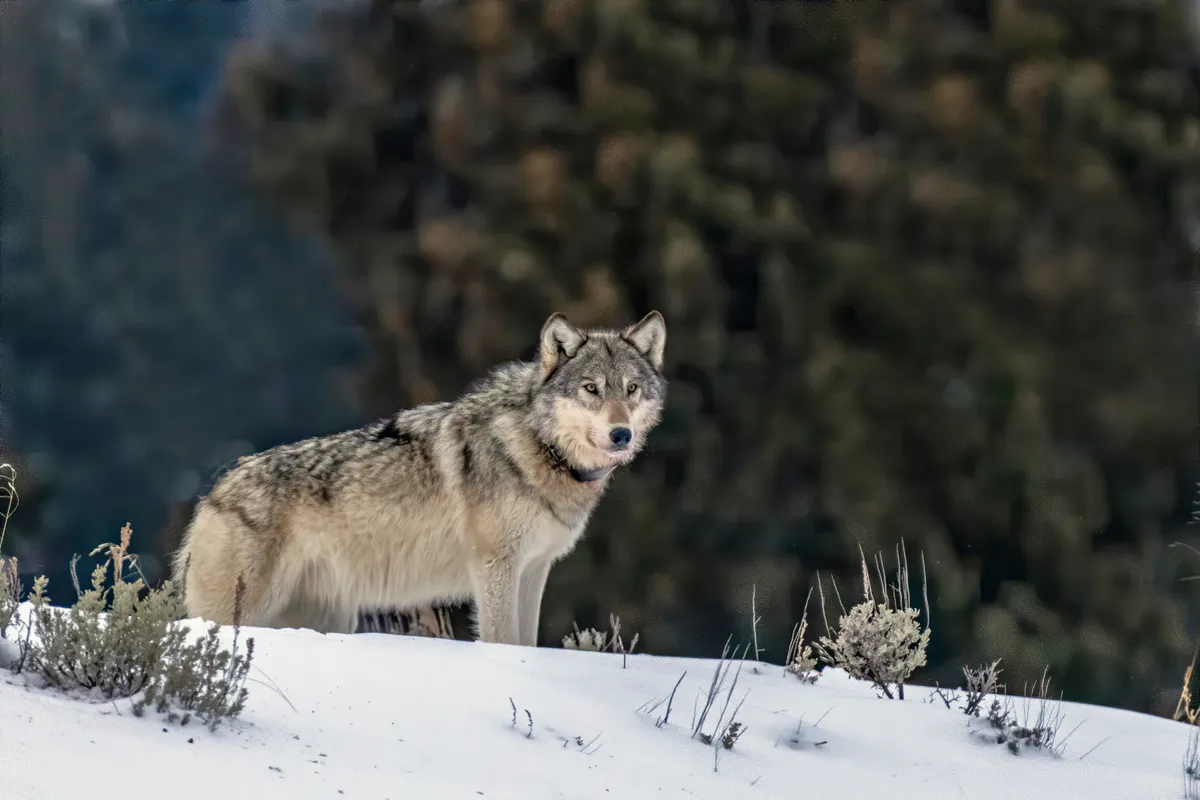
The extinction – or introduction — of a species reverberates through an ecosystem in a ‘trophic cascade’. For example, the reintroduction of wolves to Yellowstone National Park in the USA in the 1990s, after an absence of 70 years, has driven a decline in elk numbers. In turn, this has boosted riverside vegetation, resulting in more beavers and bison.
More convoluted still, in Australia, an epidemic of facial tumour disease among Tasmanian devils has resulted in more feral cats. These kill native quolls, which leads to more rabbits and therefore less vegetation.
U
V
Venomous and poisonous
The two terms – ‘venomous’ and ‘poisonous’ – are often used interchangeably to describe an organism that deploys toxins for the purposes of attack or defence. Biologically, though, they have specific meanings.
Venomous species such as jellyfish, black widow spiders and adders actively deliver their chemical arsenal into their victim with a bite or sting.
But poisonous ones – for example ladybirds, poison-arrow frogs and yew berries – are more passive, and only unleash their toxins when nibbled or touched.
However, eat a venomous animal and you could find it proves to be poisonous, too.
Veteranisation
This is a last-ditch conservation technique where trees are prematurely aged to create new habitat for rare species that depend on decaying ancient trees. Mature trees are carefully selected, then inoculated with fungi that cause heart rot, speeding up the process by which the trees decay and are hollowed out.
As part of the Back from the Brink project, old beech trees in Windsor Great Park have been veteranised to help an endangered cranefly found here and at just one other site worldwide.
Vivipary
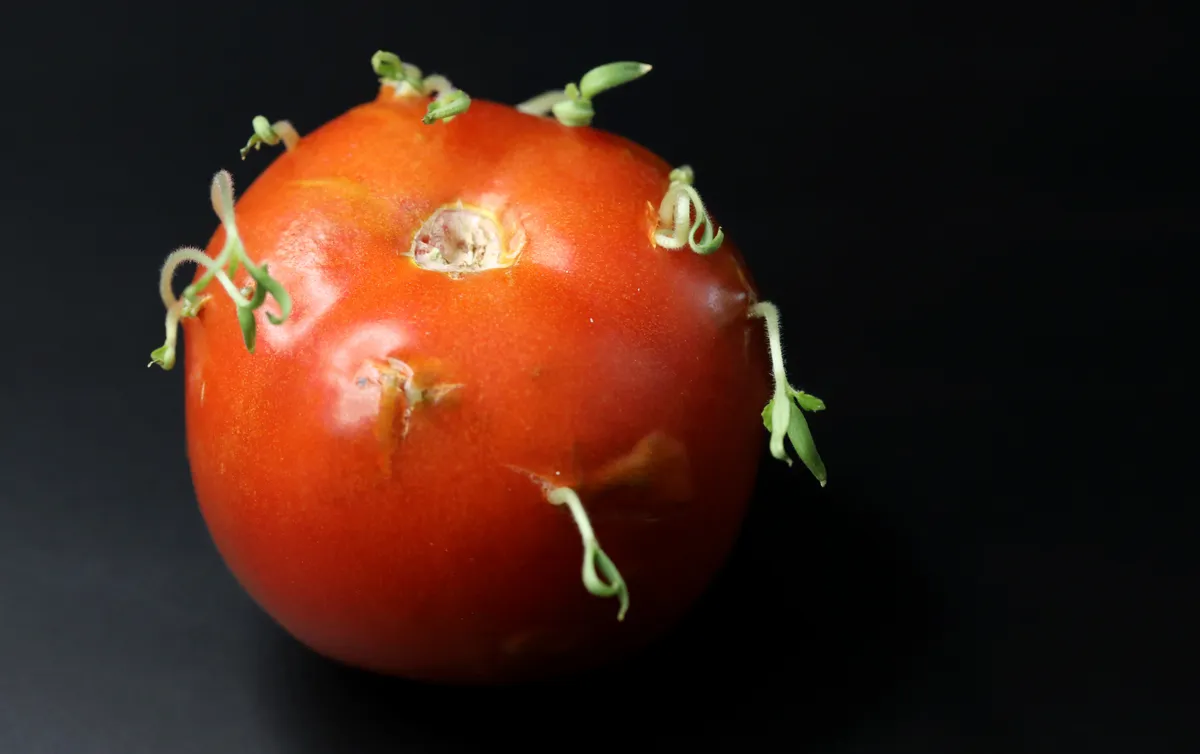
A rather odd-looking phenomenon sometimes seen in plants such as tomatoes, strawberries and teasels, vivipary is when the seeds start to develop and germinate whilst still attached to, or still within, the parent plant.
W
Wallace's line
Among Alfred Russell Wallace's many scientific contributions was a line on a map. Snaking through the Malay Archipelago, it delineates the border between flora and fauna of Asian and Australasian origin.
We now know that his line corresponds to the edges of two continental plates, which are being slowly squashed together by tectonic forces. Today, Bali and Lombok are only about 35km apart, but in terms of evolution there's an ocean between them.
X
Y
Z
Zygomorphic

A flower that has a single plane of symmetry – for instance, the left and right sides might be mirror images of each other, but not the top and bottom – is said to be zygomorphic.
Research by biologists at California State University looked at how popular this shape is with pollinators. The team found that zygomorphic flowers are visited by fewer species of pollinator than other shapes of flower. The finding is a wake-up call – these flowering plants may be at risk of extinction if any of their key pollinators disappear.
Click on the letter you want to below to jump back to that section of the article:
